Volcano Live
volcanolive.com
Vulcano | John Seach

Aeolian Islands, Italy
38.404 N, 14.962 E,
summit elevation 500 m
stratovolcanoes
Vulcano
The Romans believed that Vulcan God of fire lived below the smoking mountain in the Aeolian Islands.
At the end of the middle ages the term vulcano (volcano) was given to all such eruptive centres.
Vulcano is a volcanic island located in the Tyrrhenian Sea, off the north coast of Sicily, Italy. It is the southernmost of the eight Aeolian Islands. Vulcano has been closely monitored by scientists, using various techniques such as geophysical and geochemical measurements, gas monitoring and thermal imaging. This monitoring helps to understand the volcano's behavior and to predict potential hazards.
The volcano's activity has been relatively stable over the past decades, with no major eruptive activity reported. However, Vulcano is considered a potentially active volcano, and its activity could increase in the future, posing a potential hazard to the island's population and to ships navigating in the area.
Vulcanian eruptions are a type of explosive volcanic activity characterized by the explosive fragmentation of gas-rich magma and the ejection of volcanic ash, bombs, and scoria. They are named after the Vulcano where this type of activity was first described. Vulcanian eruptions are typically of intermediate explosivity, between the milder Strombolian eruptions and the more violent Plinian eruptions.
Vulcano photos by John Seach
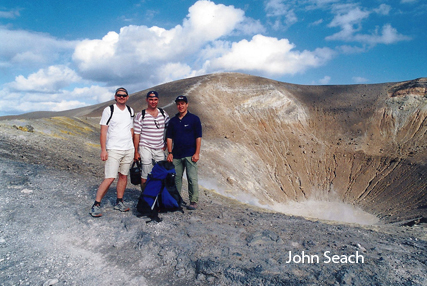
John Seach at right on edge of Gran Cratere on the summit of Vulcano
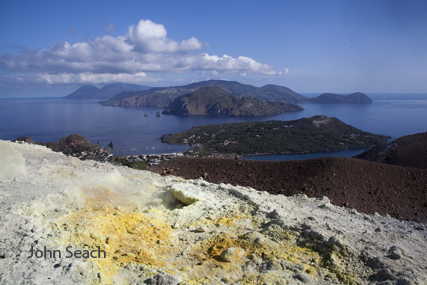
Gran Cratere, Vulcano 2016
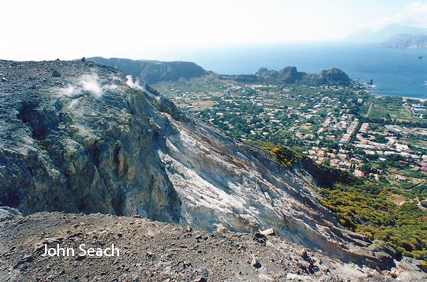
Hot steaming ground at Vulcano, Italy
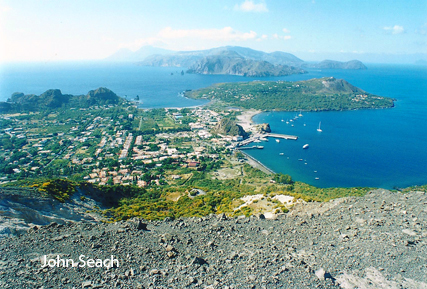
Vulcano summit and Lipari in distance
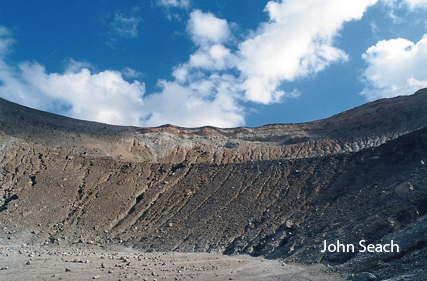
Inside Gran Cratere, Vulcano
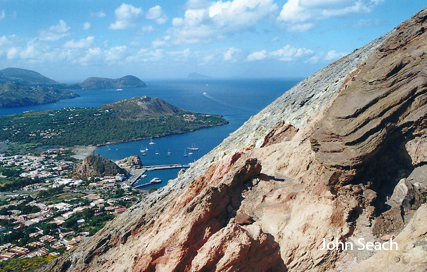
Climbing Gran Cratere, Vulcano
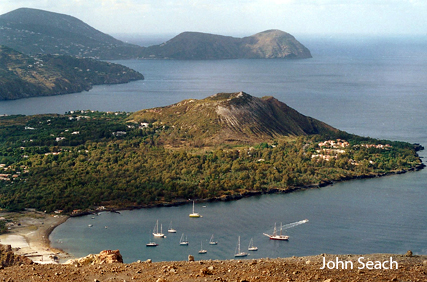
View from Vulcano crater, looking north
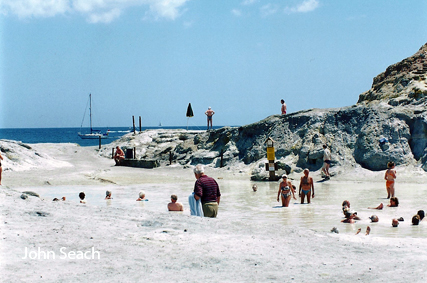
Thermal mud pool, Vulcano, Italy
On 20th April 1988 a landslide occurred on the NE flank of Vulcano, Italy. The landslide produced a small tsunami which was observed at Porto Levante. The tsunami occurred during a period of unrest at the volcano. The best observations of the landslide and tsunami came from a fisherman nearby in a boat.
The main fumarole field within Vulcano's Fossa crater is located across the northern edge, extending over the rim, and onto the crater's outer flank.
2021 Unrest
On 21 November 2021, residents were advised to evacuate due to high levels of unrest at the volcano.
Further reading
Cintorrino, A.A., Palano, M. and Viccaro, M., 2019. Magmatic and tectonic sources at Vulcano (Aeolian Islands, Southern Italy): A geodetic model based on two decades of GPS observations. Journal of Volcanology and Geothermal Research, 388, p.106689.
Lucchi, F., Peccerillo, A., Keller, J., Tranne, C.A. and Rossi, P.L. eds., 2013, December. The Aeolian Islands Volcanoes. Geological Society of London.
Baubron, J.C., Allard, P. and Toutain, J.P., 1990. Diffuse volcanic emissions of carbon dioxide from Vulcano Island, Italy. Nature, 344(6261), pp.51-53.
Vulcano Eruptions
1892?, 1888-90, 1886, 1873-79, 1831?, 1822-23?, 1812?, 1786?, 1780, 1775?, 1771, 1731-39, 1727,1688, 1651, 1631, 1626, 1618, 1550, 1444, 1250, 925, 729, 536?, 144, 50, -10, -24, -91, -126, -183, -215, -300, -360, -475?